Last updated on January 31st, 2024
Is Mexico City Accessible and Safe?
by Tanzila Kahn
Fifteen years ago, at the age of 15, I wrote my first novel, ‘A Story of Mexico’. What else do you do when you are in love with Antonio Banderas’s movies such as, ‘Once Upon a Time in Mexico’. Fifteen years later, I had a chance to board a flight to Mexico City to see and explore the culture, food and people first-hand. (After all, we all feel a sense of familiarity and belonging with Mexican culture thanks to the tacos and the tapas!) But underlying my excitement was my concern for safety and accessibility. There was just one way to find out!
Despite some challenges, Mexico City was worth the trip
Mexico City can be challenging for those of us in wheelchairs. On the streets, I faced occasional challenges of steep ramps and broken sidewalks. There are also different types of buses, some with wheelchair signs and ramps that can be pulled out. I still prefer to use the streets to wheel around and Uber for longer distances.
Despite this, witnessing the feel of the city was priceless. Being so close to graffiti, the people and architecture of different buildings felt like I was moving around Mexico hand in hand with the city. Although the bus would have been cheaper or nearly free, it’s sometimes important to weigh passion with money and then make the choice.
I chose Hotel Metropol as it was in the heart of the city with easy access to shops, cafes and restaurants. Unfortunately, it was not as accessible as mentioned on the website. Apart from having a ramp on the entrance, the hotel had a very narrow bathroom entrance and I managed to use it only after placing a chair inside.
Five accessible places in Mexico City
1. The National Museum of Anthropology
My first planned activity was the National Museum of Anthropology. It was free like most museums across the world that are mostly accessible and have free entry for people with disabilities. This is a great example of giving access to knowledge to every individual and I insist everyone take full advantage and visit museums to experience history. This Museum had indoor and outdoor exhibitions and one day was not enough for it. I saw Mexican culture, history, customs, family systems and the interesting history of religions, tribes and rituals.
2. Plaza Garibaldi
Plaza Garibaldi is a tourist attraction for music lovers, It is THE place to catch a Mariachi concert. Dressed in traditional attire, the musicians create an atmosphere of celebration and joy. You can find them playing in the open or in bars. I walked into a bar that had a big wheelchair sign and this place was accessible. I then enjoyed a memorable performance by Fernando and his band.
As much as this place is vibrant with music and colour, this place is also known as the most unsafe for anyone due to the high unemployment rate. However, I did not feel unsafe, but taking precautions is always a good thing so I stayed alert at all times and stayed in crowds where I felt more secure.
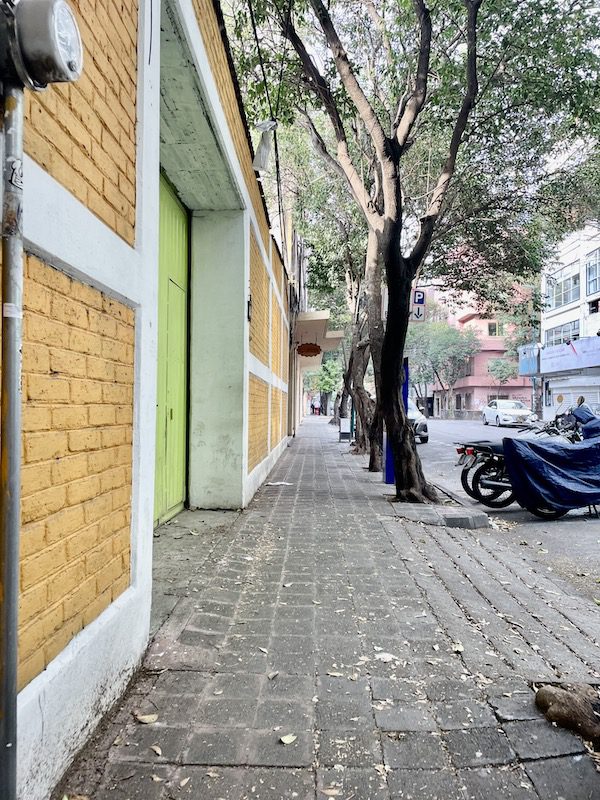
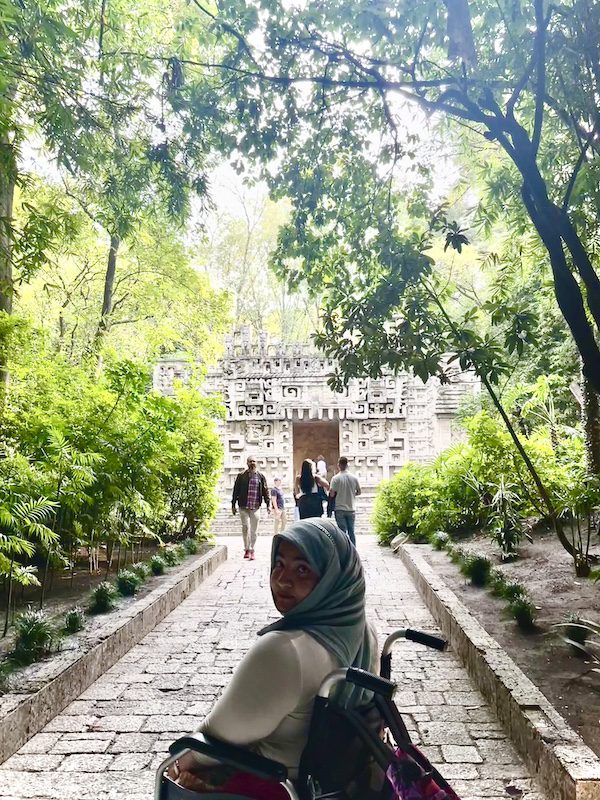
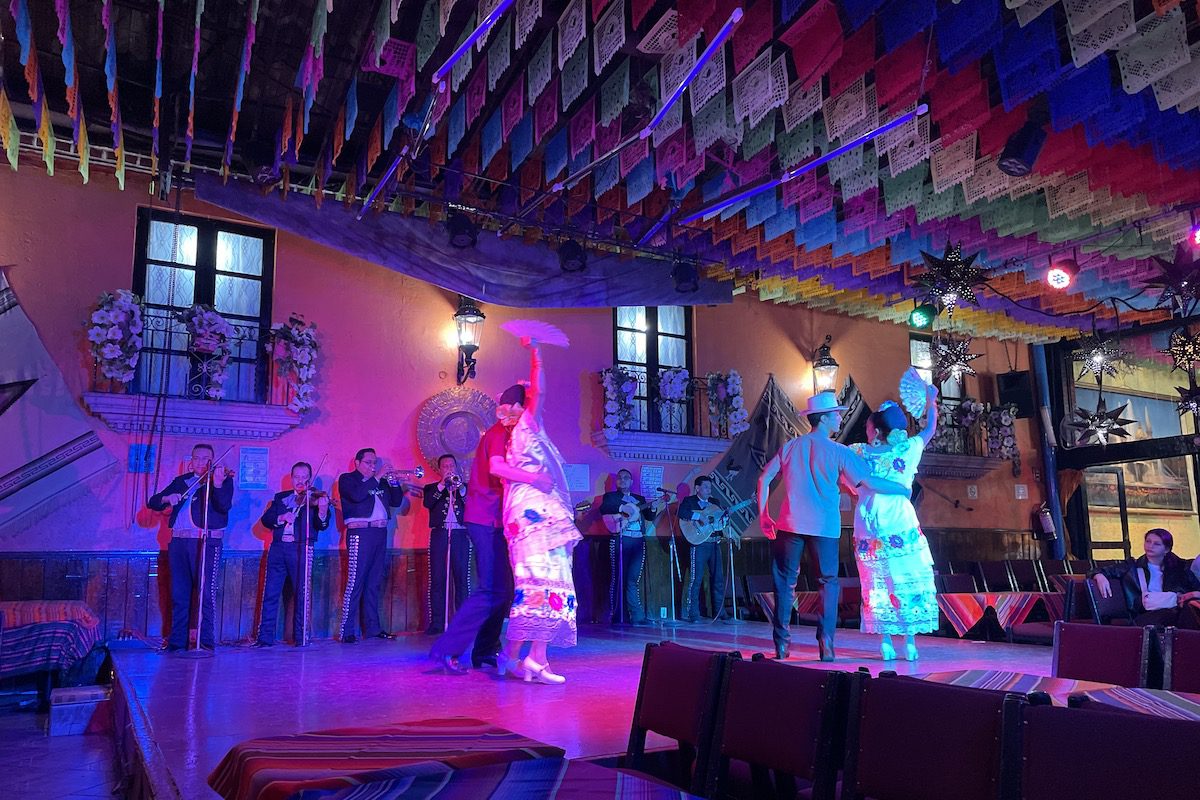
3. Frida Kahlo Museum (Casa Azul/The Blue House)
A visit to the Frida Kahlo Museum, also known as the Casa Azul, offers a glimpse into the life and art of the iconic Mexican artist. Navigating the museum’s accessible paths, I dove into the vibrant colours of Kahlo’s works and explored the gardens surrounding the Blue House.
The scent of blooming flowers and the vivid hues of the artwork created a captivating atmosphere, allowing the visitor to connect with the spirit of Frida Kahlo on a personal level I had pre-booked my time slot online which is recommended because the queue is very long but once you go in you can stay as long as you like. The entire house had a history of Frida’s childhood and trajectory of life, love and tragedy.
As we both were women with disabilities and also share the heart of an artist, I was curious to see how her life affected her creativity. I saw her living space, prosthetics and even dresses that were designed to conceal her disability, a thing that I also do with my skirts. There were ramps in most places but where the ramps or lifts could not go, but a volunteer would give a virtual tour to ensure I did not miss anything. I appreciated this effort by the museum because it’s a step forward in making sure I don’t have a reduced experience of a place than others. I mean we can’t live a half-life in a full world. Right?
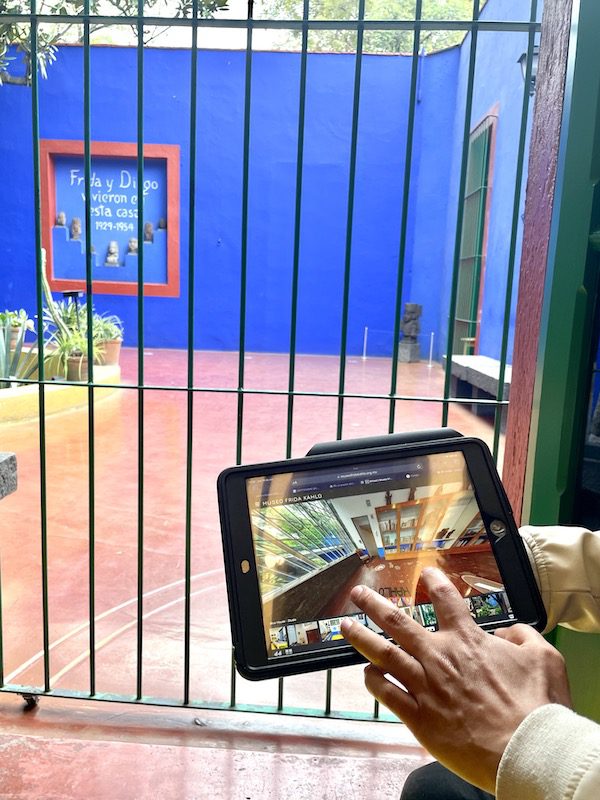
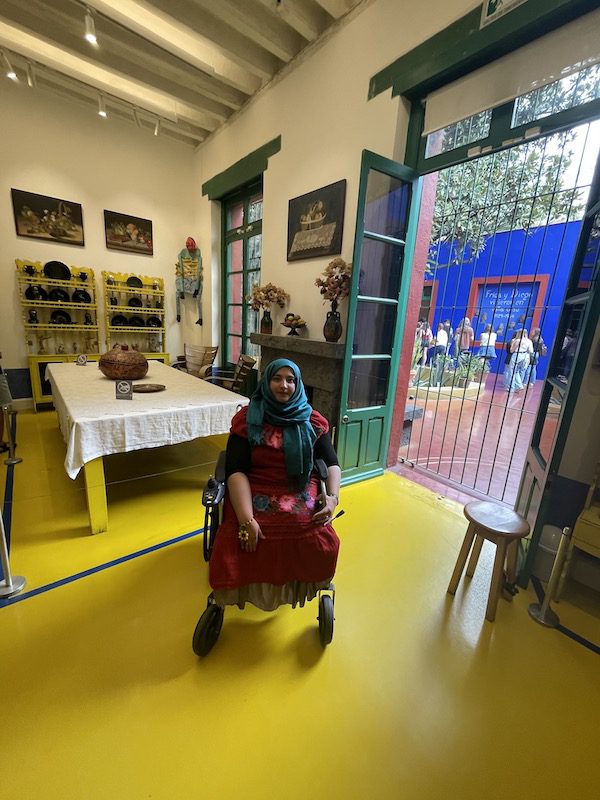
4. Hot Air Balloon and Teotihuacan
Seeking a unique perspective of the city, I decided to take a hot air balloon ride. Surprisingly it was an accessible customized experience and after we had landed, I decided to see Teotihuacan, the ancient city of pyramids with its historical significance.
While the pyramids themselves pose a challenge, the site offers accessible paths that allow me to experience the Pyramid of the Sun and the Pyramid of the Moon. The place also had a walk-in museum that shared the history of the town around the pyramids and about the ancient ritual customs that were spooky: religious human sacrifice!
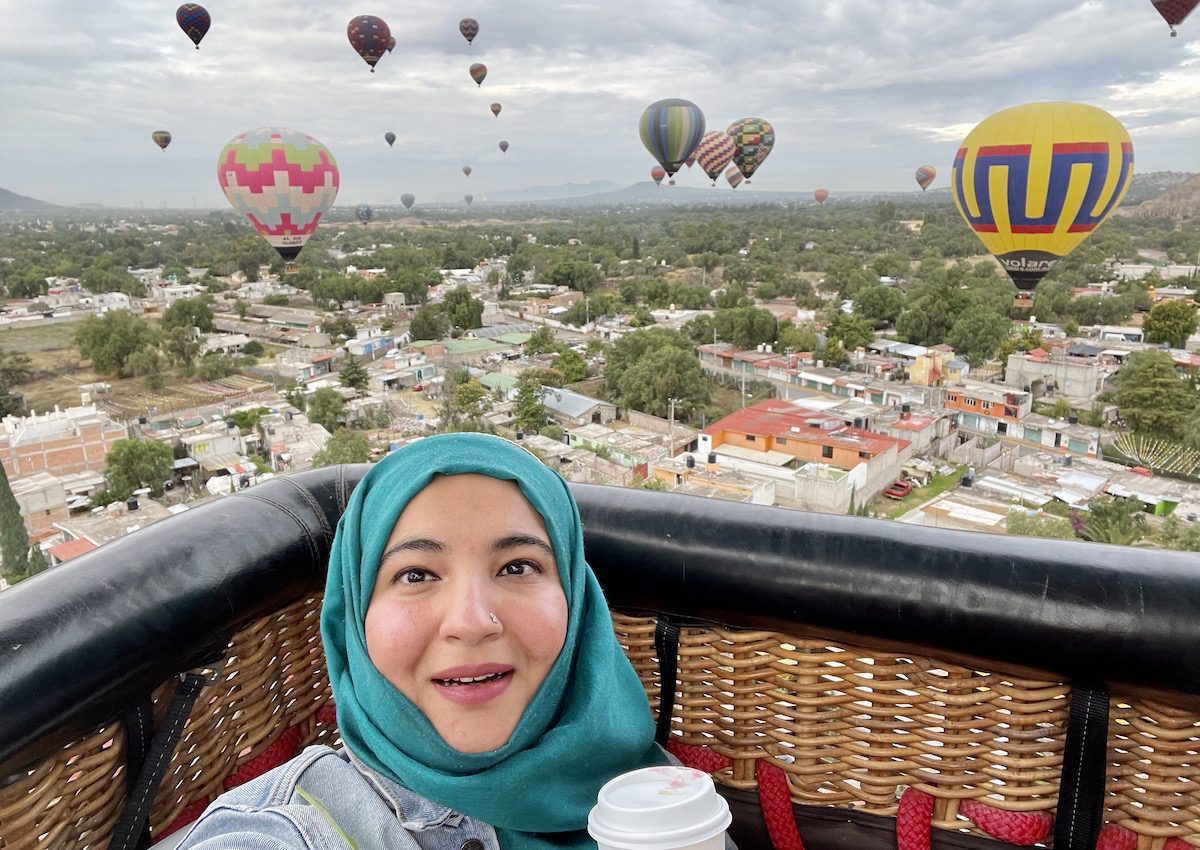
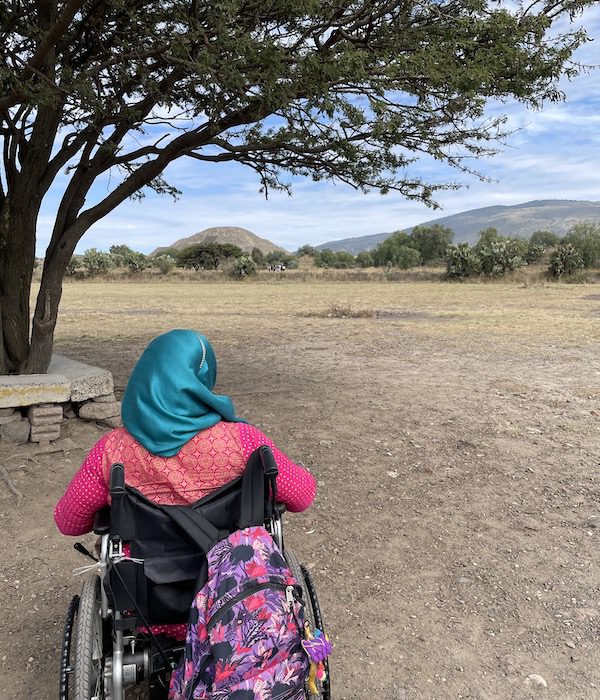
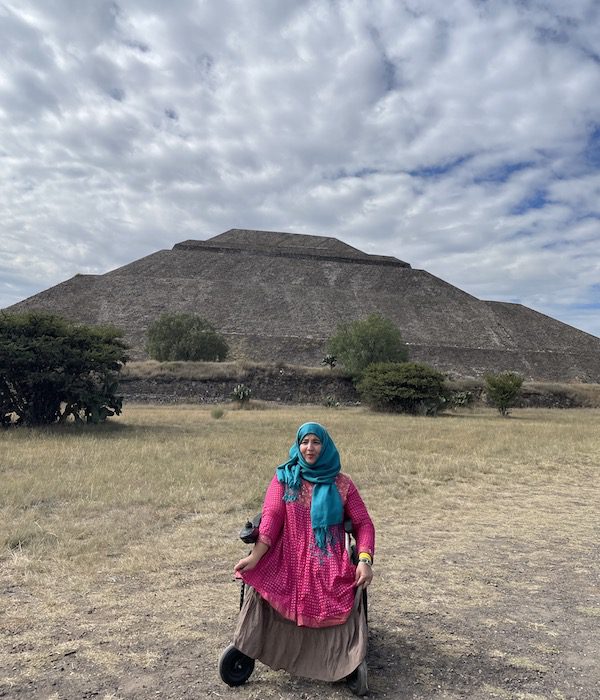
5. Saying goodbye with the Day of the Dead
As luck would have it, the trip coincided and concluded with the Day of the Dead celebrations.
The streets come alive with vibrant colours, intricate costumes, and lively processions. The aroma of marigolds and the sound of laughter and music fill the air, creating a sensory symphony that captures the essence of Mexican traditions from history to the date. From morning to night, the streets were filled with mascots, local vendors, performers and artists.
Every moment was an opportunity to enjoy and document. This was a short trip to Mexico City but gave me enough memories to savor and also know enough about accessibility to plan a second and longer trip to Mexico.
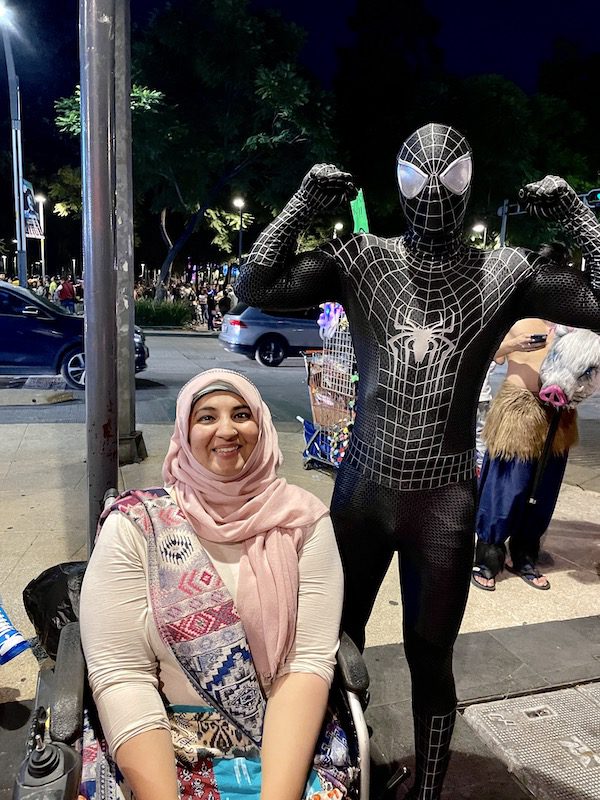
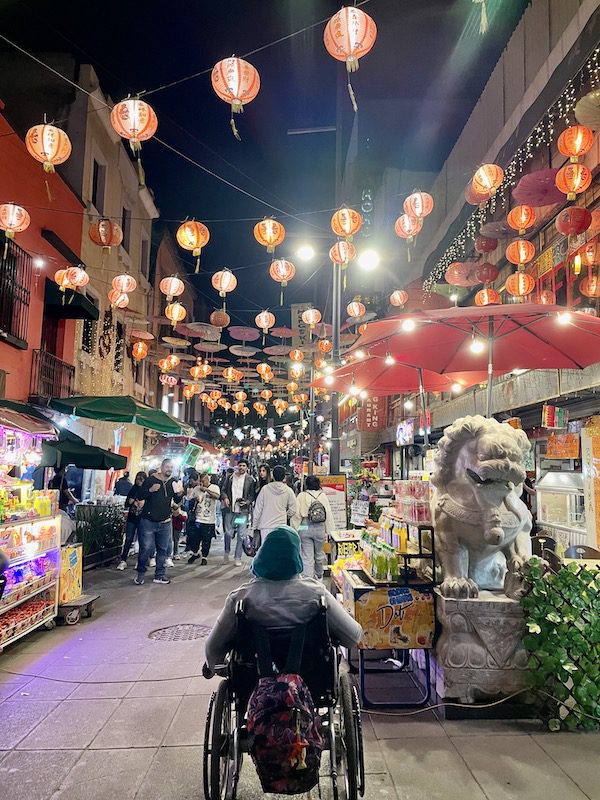
Read More on Accessible Travel
Creating an Inclusive Travel World Where Everyone Belongs: Seven Things That Need to Change
With the growing demand for accessibility in the travel space, here are seven ways the travel industry can embrace a higher level of inclusion.
Accessible Adventures in Albania: An Off-Season Road Trip is Full of Surprises
A off-season road trip through the southern part of Albania showcases stunning coastal villages, ancient ruins, and picturesque landscapes
Destin, Florida, an Undiscovered Gem on the “Emerald Coast”
Located on Florida’s west coast, Destin has evolved from a sleepy fishing village to a safe, accessible place for older women to enjoy white sand beaches and an active lifestyle.

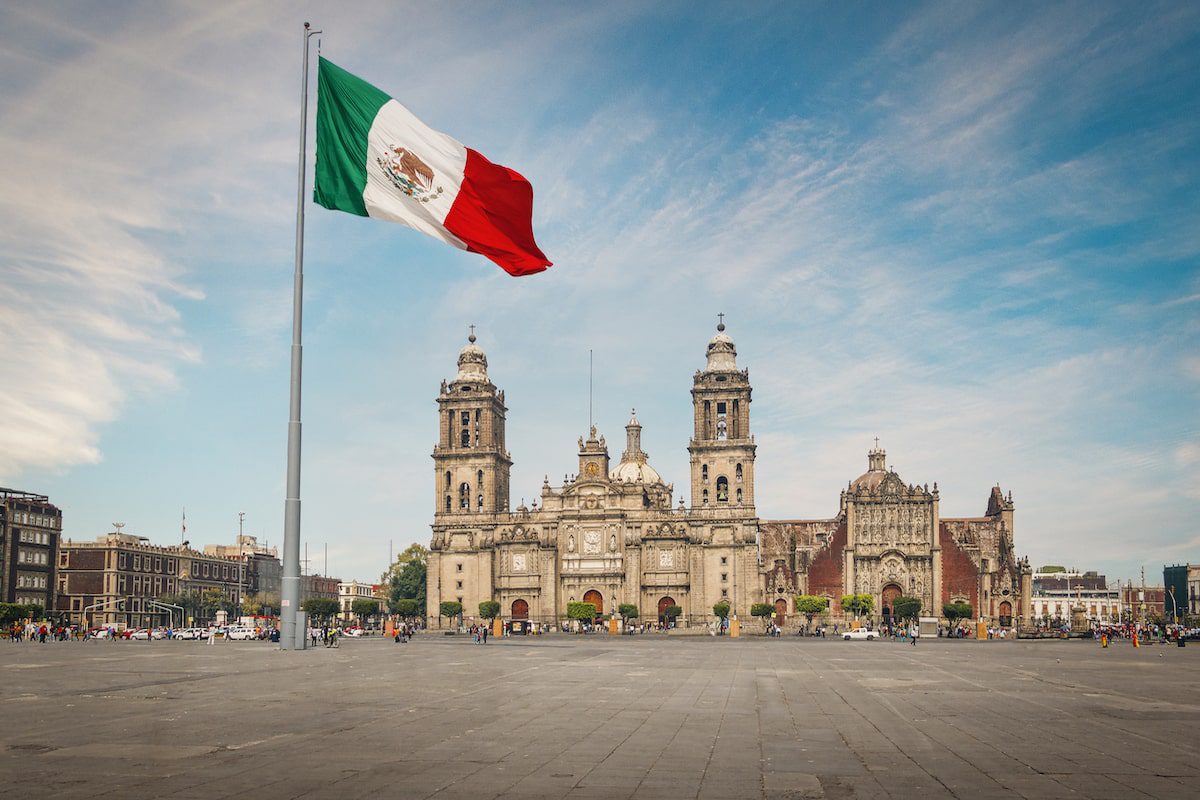


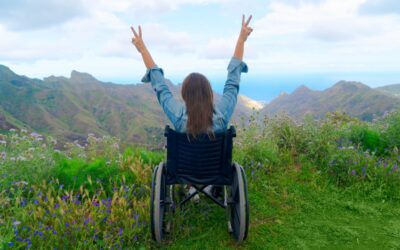
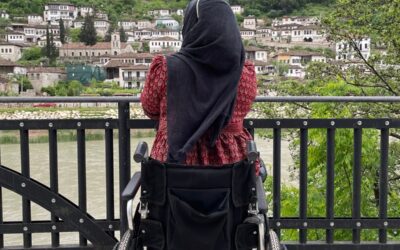

Is the belle arteas suitable for someone who walks with a walker
I have been excited to join JourneyWoman and even more excited to find your disability section. I have been in a wheelchair since 1991 and done a great deal of travelling in my wheelchair including a trek to Everest Basecamp in a contraption called a trailrider . Of course I have had many adventures and misadventures and blown up a few of my battery chargers in different countries when I got the wrong adaptors !
I wondered if you have a complete list of Wheelchair accessible Air B and Bs ….Ive looked but can’t seem to find a complete list on your website
With many thanks, Pippa